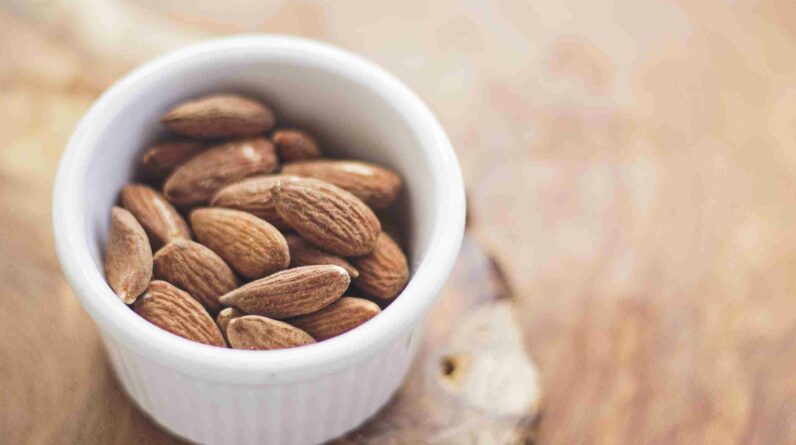Curious about whether you really need a range hood for your stove? Well, look no further as we’re here to shed some light on this topic! Having a range hood for your stove may not seem like a pressing matter, but let me tell you, it can make a world of difference in your kitchen. From eliminating unpleasant odors to keeping your cooking area free from excess steam and smoke, a range hood acts as the unsung hero of your culinary adventures. So, let’s find out why investing in a good range hood might just be the missing ingredient to take your cooking experience to a whole new level.
Benefits of Having a Range Hood
Improved Air Quality
Having a range hood in your kitchen can greatly improve the air quality in the space. When you cook, various pollutants like smoke, steam, and grease particles are released into the air. A range hood helps to capture and remove these pollutants, preventing them from spreading throughout your home. With a range hood, you can breathe easier knowing that the air in your kitchen is being filtered and cleaned.
Removal of Odors and Smoke
Cooking often leads to the production of strong odors that can linger in your kitchen for hours or even days. Additionally, when you cook on high heat, smoke can be generated, which can be both unpleasant and potentially harmful. A range hood effectively removes these odors and smoke, keeping your kitchen smelling fresh and clean. This is especially beneficial if you enjoy cooking aromatic dishes or frequently use ingredients that emit strong smells.
Prevention of Grease Buildup
When you cook, grease can easily accumulate on surfaces such as cabinets, walls, and countertops. Over time, this can create a greasy film that is not only unsightly but also difficult to remove. A range hood acts as a barrier, capturing the grease particles in the air before they have a chance to settle on surfaces. By preventing grease buildup, a range hood helps to keep your kitchen cleaner and reduces the amount of time and effort required for routine cleaning.
Enhanced Safety and Fire Prevention
Cooking can sometimes lead to accidents, such as flare-ups or small fires on the stovetop. A range hood with a built-in fire suppression system can quickly and effectively extinguish these fires, helping to prevent them from spreading and causing significant damage. Additionally, the proper ventilation provided by a range hood reduces the risk of carbon monoxide buildup, which can be harmful or even fatal. With a range hood, you can enjoy peace of mind knowing that you and your loved ones are cooking in a safe environment.
Factors to Consider Before Installing a Range Hood
Cabinet Space and Ductwork
Before installing a range hood, it is important to consider the available cabinet space and the presence of ductwork. Range hoods come in different sizes and configurations, and it is essential to choose one that fits properly in your kitchen. Measure the space above your stove to ensure that the range hood will fit comfortably and allow for proper ventilation. Additionally, check if you have existing ductwork or if it needs to be installed. Ductwork is necessary for range hoods that require external venting, so make sure to account for this in your plans.
Types of Range Hoods
There are various types of range hoods available, each with its own advantages and considerations. The most common types include under cabinet range hoods, wall-mount range hoods, island range hoods, insert range hoods, and downdraft range hoods. Consider the layout of your kitchen, the location of your stove, and your personal preferences when selecting the type of range hood that best suits your needs.
Ventilation Requirements
Proper ventilation is crucial for the effective operation of a range hood. Check the ventilation requirements specified by the manufacturer to ensure that your kitchen meets the necessary criteria. This includes the size of the vent duct, the minimum distance required between the range hood and the stovetop, and the recommended duct length. Adequate ventilation ensures that the range hood can effectively remove pollutants from the air and maintain a healthy cooking environment.
Budget Constraints
Lastly, consider your budget when planning to install a range hood. Range hoods come in a wide range of prices, and it is important to choose one that fits within your budget without compromising on quality. Take into account the initial cost of the range hood, any additional installation or ductwork expenses, as well as the ongoing maintenance and operating costs. By considering your budget constraints, you can make an informed decision on the range hood that offers the best value for your money.
Different Types of Range Hoods
Under Cabinet Range Hood
An under cabinet range hood is a popular choice for kitchens with limited space. As the name suggests, it is installed beneath a cabinet, saving valuable overhead space. This type of range hood is discreet and blends seamlessly with the cabinetry, providing a clean and unified look. Under cabinet range hoods are available in various sizes and styles, allowing you to choose the one that complements your kitchen design.
Wall-Mount Range Hood
Wall-mount range hoods are mounted directly on the wall and are a stylish choice for kitchens with a modern or contemporary design. They provide excellent ventilation and are available in various sizes and finishes to suit different kitchen layouts. Wall-mount range hoods can be a focal point in your kitchen, adding an elegant touch while effectively removing odors, smoke, and grease.
Island Range Hood
If you have a kitchen island with a stovetop, an island range hood is the ideal choice. These range hoods are specifically designed to be mounted directly above the cooking surface, ensuring efficient ventilation in an open kitchen layout. Island range hoods often feature a sleek and modern design, making them a visually appealing addition to your kitchen. Consider the height and size of your ceiling when selecting an island range hood to ensure proper installation and functionality.
Insert Range Hood
Insert range hoods are designed to be discreetly integrated into custom cabinetry or a range hood enclosure. They offer a seamless and cohesive look, as they are concealed within a structure rather than being prominently displayed. Insert range hoods provide powerful ventilation while maintaining a minimalist aesthetic. However, due to their custom installation requirements, they may involve additional costs and planning.
Downdraft Range Hood
Downdraft range hoods are a unique option that offers an alternative to traditional overhead ventilation systems. They are installed behind the cooking surface and rise up when in use, drawing in smoke, odors, and grease. Downdraft range hoods are particularly suitable for kitchens with limited ceiling space or for those who prefer a minimalist look. However, it is important to note that their effectiveness may be slightly reduced compared to other types of range hoods.
Ventilation System Options
Ducted Range Hoods
Ducted range hoods are the most common and effective option for removing pollutants from the air. They require proper ductwork to be installed, which allows for the direct venting of smoke, odors, and grease outside the home. Ducted range hoods provide the best ventilation performance, as they eliminate these pollutants completely. However, installing ductwork can be a more complex and expensive process compared to other ventilation options.
Ductless Range Hoods
Ductless range hoods, also known as recirculating range hoods, do not require ductwork and are easier to install. Instead of venting the air outside, they use filters to capture grease and odors before recirculating the purified air back into the kitchen. While ductless range hoods may not provide the same level of ventilation as ducted ones, they are a viable option for kitchens where installing ductwork is not feasible. It is important to regularly clean and replace the filters in ductless range hoods to maintain their effectiveness.
Proper Sizing and Installation
Choosing the Right Size
Choosing the right size range hood is essential for optimal performance. A range hood that is too small for your stove will not effectively capture and remove pollutants, while one that is too large may be unnecessarily bulky and overpowering. To determine the right size, consider the size of your stove or cooktop. As a general guideline, the range hood should be at least as wide as the cooking surface, with additional width for optimal coverage.
Height and Distance Guidelines
Proper installation height and distance guidelines are important to ensure efficient ventilation and safety. The height of the range hood above the cooking surface should be determined by the manufacturer’s recommendations. Typically, it is recommended to keep the bottom of the range hood between 24 and 36 inches above the stovetop. Additionally, consider the distance between the range hood and any surrounding cabinets or walls to ensure proper airflow and functionality.
Professional Installation
To ensure proper installation and functionality, it is advisable to hire a professional for the installation of a range hood. Professional installers have the necessary expertise and experience to install the range hood safely and correctly. They can also advise on the best location, height, and size of the range hood based on your specific kitchen layout. Hiring a professional eliminates the risk of improper installation, ensuring that your range hood operates effectively and safely.
Maintenance and Cleaning
Replacing Filters
Regularly replacing the filters in your range hood is crucial for maintaining its performance and efficiency. Grease filters should be cleaned or replaced every few months, depending on your cooking frequency. Charcoal filters in ductless range hoods also need to be replaced periodically to ensure proper odor removal. Refer to the manufacturer’s instructions for specific filter replacement guidelines and procedures.
Cleaning and Degreasing
Cleaning and degreasing your range hood on a regular basis is important for its longevity and functionality. Wipe down the exterior surfaces of the range hood with a mild detergent or a mixture of warm water and vinegar. Remove and clean the grease filters in hot soapy water or by using a dishwasher, depending on the manufacturer’s recommendations. Clean the interior of the range hood and the fan blades using a degreaser to remove any accumulated grease. Regular cleaning not only improves the aesthetics of your range hood but also maintains its ventilation efficiency.
Ensuring Proper Ventilation
To ensure proper ventilation, regularly inspect and clean the vent ducts and exterior vents of your range hood. Remove any obstructions or blockages that may hinder airflow. Check the ductwork for leaks, gaps, or damage, and repair or replace as necessary. Proper ventilation is key to the effective operation of your range hood, so it is important to keep the ventilation system clean and well-maintained.
Energy Efficiency
Energy Star Rated Range Hoods
Choosing an Energy Star rated range hood can help you save energy and reduce your carbon footprint. Energy Star rated range hoods have been independently tested and certified to meet strict energy efficiency guidelines. They are designed to effectively remove pollutants while consuming less energy. By selecting an Energy Star rated range hood, you can enjoy the benefits of a high-performing range hood while minimizing energy consumption and utility costs.
Variable Speed Fans
Some range hoods come equipped with variable speed fans, allowing you to adjust the ventilation power based on your cooking needs. Lower settings can be used for lighter cooking tasks, while higher settings can be utilized when cooking at high heat or producing more smoke and steam. Variable speed fans not only help to conserve energy but also provide a quieter operation compared to range hoods with fixed-speed fans.
LED Lighting
Many range hoods now incorporate LED lighting, which offers several advantages over traditional lighting options. LED lights are energy-efficient and last longer, reducing the need for frequent bulb replacements. They also provide bright and even lighting, enhancing visibility while cooking. LED lighting in range hoods can also contribute to the overall aesthetics of your kitchen, adding a modern and stylish touch.
Considerations for Open-Concept Kitchen Designs
Noise Considerations
Open-concept kitchen designs often integrate the cooking area seamlessly with the living or dining spaces. In such cases, it is important to consider the noise generated by the range hood. Look for range hoods that offer quiet operation, especially if your kitchen is directly connected to the living or dining areas. Range hoods with sound-absorbing materials and advanced noise reduction technologies can help minimize disruptive noise while still providing efficient ventilation.
Design and Aesthetic Appeal
In open-concept kitchen designs, the range hood can become a prominent design element in the overall space. Choose a range hood that complements the style and aesthetic of your kitchen. From sleek stainless steel to modern glass and custom finishes, there are various design options to suit different preferences. Consider the size, shape, and color of the range hood, ensuring that it blends seamlessly with the surrounding kitchen decor and becomes an attractive focal point.
Alternatives to Traditional Range Hoods
Kitchen Hood Suppression Systems
For commercial kitchens or residential kitchens that require enhanced fire protection, kitchen hood suppression systems are a viable alternative to traditional range hoods. These systems are designed to quickly detect and suppress fires that may occur in the cooking area. They incorporate specialized fire suppression agents and mechanisms to effectively extinguish flames, preventing them from spreading and causing extensive damage. While kitchen hood suppression systems may be more costly and require professional installation, they offer an additional layer of safety and fire prevention.
Recirculating Range Hoods
Recirculating range hoods, also known as ductless range hoods, are an alternative to traditional ducted range hoods. Instead of venting the air outside, recirculating range hoods use filters to capture and purify the air before recirculating it back into the kitchen. These range hoods are easier to install as they do not require ductwork. However, it is important to note that the effectiveness of recirculating range hoods in removing smoke and odors may be slightly lower than that of ducted range hoods.
External Exhaust Systems
In certain situations where traditional range hoods may not be feasible, external exhaust systems can be considered. These systems involve installing an exhaust fan or blower outside the kitchen to remove pollutants from the air. They are often used in kitchens with no exterior wall or limited ceiling space for ductwork. External exhaust systems require professional installation and may involve more complex planning and additional costs. However, they offer a flexible solution for kitchens with unique layout constraints.
Conclusion
The importance of having a range hood in your kitchen cannot be overstated. From improving air quality to removing odors and preventing grease buildup, a range hood offers numerous benefits. Proper consideration of factors such as cabinet space, ventilation requirements, and budget constraints is crucial when selecting and installing a range hood. With various types and styles available, you can choose one that suits your kitchen design and personal preferences. Routine maintenance, cleaning, and ensuring proper ventilation are essential for the longevity and efficiency of your range hood. Energy-efficient options such as Energy Star rated range hoods, variable speed fans, and LED lighting can help minimize energy consumption. In open-concept kitchen designs, noise considerations and design appeal should be taken into account. If traditional range hoods are not suitable for your kitchen, alternatives like kitchen hood suppression systems, recirculating range hoods, or external exhaust systems can be considered. Ultimately, the decision to install a range hood should be based on personal preferences, lifestyle, and the desire for a safe and healthy cooking environment.








